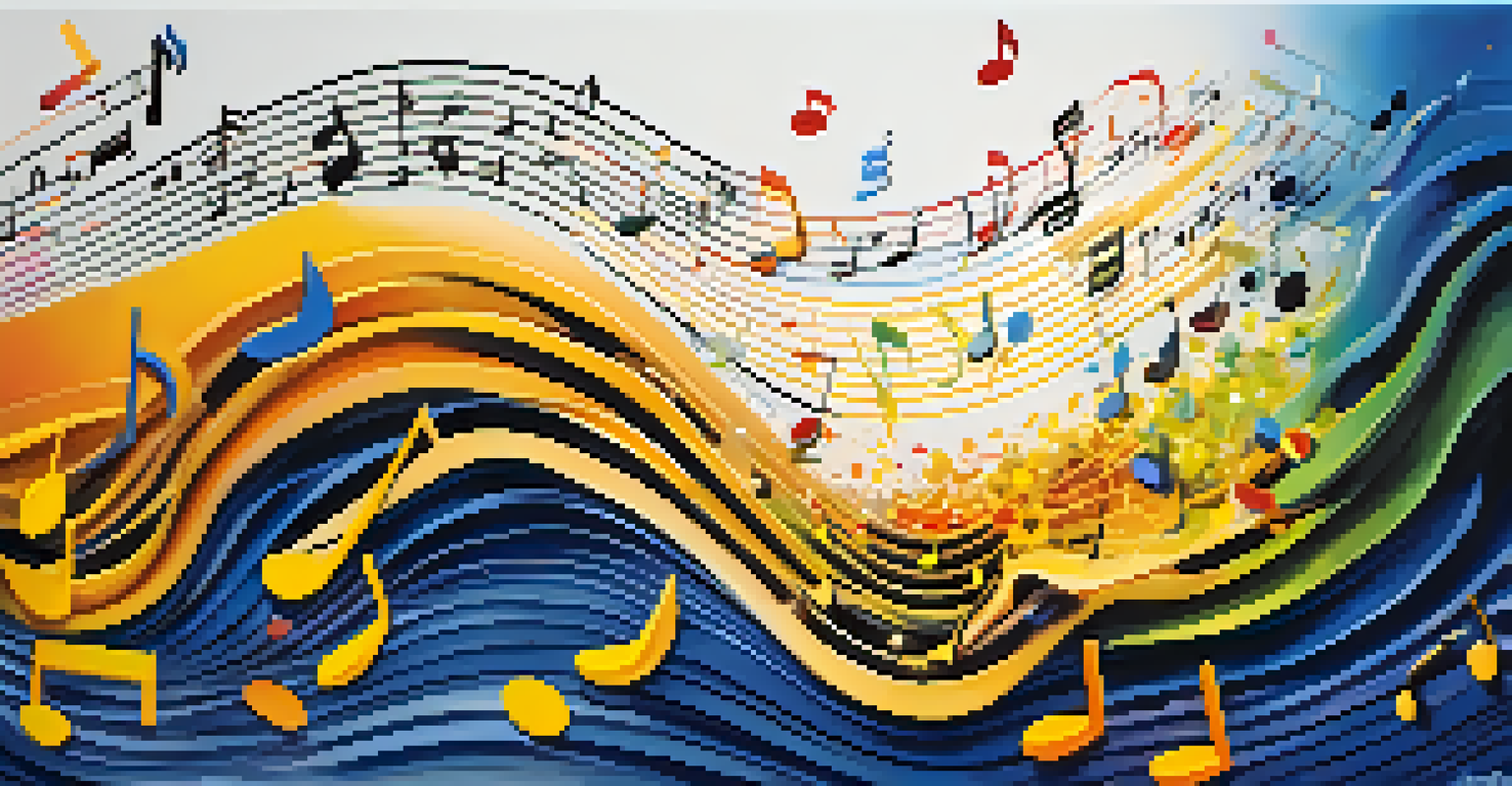The Phonetic Similarities Between Music and Spoken Language

Introduction to Phonetics in Music and Language
Phonetics is the study of sounds in human speech, but did you know it also plays a vital role in music? Both music and spoken language use a range of sounds that can express emotions and convey meaning. By exploring the phonetic similarities, we can gain a deeper understanding of how these two forms of expression interact and complement each other.
Music is the shorthand of emotion.
For instance, just like words can have different pitches and tones, musical notes can also vary in frequency and intensity. This similarity allows musicians and speakers alike to create nuanced expressions that resonate with their audience. In essence, both music and language share a common thread in their reliance on sound to communicate ideas.
As we delve into the intricate relationship between phonetics, music, and language, we’ll uncover fascinating connections that reveal how these elements converge in our everyday experiences.
Melody and Intonation: The Sound of Emotion
Melody in music can be likened to intonation in spoken language, both of which convey emotional context. Just as a rising pitch can indicate a question in conversation, melodies can evoke feelings of joy, sadness, or tension. This connection highlights how both forms of communication use sound to express emotions beyond mere words.

Consider how a simple lullaby can soothe a child while a rousing anthem can inspire a crowd. The rise and fall of melodies mimic the natural fluctuations in human speech, making it easier for listeners to relate emotionally. Ultimately, melody and intonation are powerful tools for engagement in both music and language.
Phonetics Connects Music and Language
Both music and spoken language utilize sound to express emotions and convey meaning.
Understanding this relationship enhances our appreciation for both arts, as we recognize that the emotional weight carried by a song is similar to that of a heartfelt conversation.
Rhythm and Syntax: Structuring Our Expressions
Rhythm serves as the backbone of music, just as syntax structures our spoken and written language. In music, rhythm dictates how notes are organized over time, creating patterns that listeners can follow. Similarly, syntax governs how words are arranged to form coherent sentences, shaping our understanding of what is being communicated.
Language is the dress of thought.
For example, think of a catchy pop song: its rhythmic beats guide the listener through the verses and chorus. In language, a well-structured sentence flows smoothly, making it easy to grasp the intended meaning. Both music and language rely on these structures to ensure clarity and engagement.
When we appreciate the rhythm in music and the syntax in language together, we can see how they both create memorable and impactful experiences.
Phonetics and Sound Patterns: A Deeper Connection
Phonetics involves the analysis of sound patterns, which can be found in both music and spoken language. In music, sound patterns create motifs and themes, while in language, they contribute to the rhythm and flow of speech. Recognizing these patterns allows us to appreciate the artistry in both forms of expression.
Consider how a catchy jingle sticks in your mind—this is a result of sound patterns that make it memorable. In spoken language, similar patterns can make phrases more impactful or persuasive. This interplay between phonetics and sound patterns enriches our experience of both music and communication.
Emotional Expression Through Sound
Melody in music parallels intonation in speech, allowing both to communicate feelings effectively.
By studying these patterns, we can learn how to craft messages or melodies that resonate deeply with others, tapping into the universal language of sound.
Cultural Influences on Music and Language
Both music and spoken language are heavily influenced by culture, shaping how sounds are perceived and interpreted. Different cultures have unique musical styles and linguistic features, which reflect their values and traditions. This cultural lens allows for a richer understanding of the phonetic similarities between the two.
For instance, consider how certain musical scales are prevalent in specific cultures, much like dialects in spoken language. The way we use sound to communicate often mirrors the musical heritage of our community, creating a beautiful tapestry of expression. This blend of cultural influences shapes our emotional responses to both music and language.
By appreciating these cultural similarities, we can foster greater empathy and connection with others, recognizing that our ways of expressing ourselves are deeply rooted in our backgrounds.
The Role of Repetition: Reinforcing Meaning
Repetition is a powerful tool in both music and language, reinforcing key messages and enhancing memorability. In music, repeated phrases can create a sense of familiarity and comfort, while in spoken language, repeating a point can emphasize its importance. This shared strategy highlights how both forms of expression can engage audiences effectively.
Think of a chorus that you can't help but sing along to; its repetition makes it stick in your mind. Similarly, when someone reiterates a vital concept in conversation, it becomes more likely to resonate with listeners. This technique not only strengthens the emotional connection but also aids in retention.
Cultural Impact on Sound Perception
Music and language reflect cultural influences, shaping how sounds are understood and appreciated.
Recognizing the role of repetition in both music and language can help us become more effective communicators, whether we are writing a song or delivering a speech.
Conclusion: Harmonizing Music and Language
As we explore the phonetic similarities between music and spoken language, it's clear that they share fundamental principles. Both rely on sound to convey emotions, structure, and meaning, creating a rich tapestry of expression that resonates with us all. This harmony between music and language illustrates the power of sound in connecting us as humans.
By understanding these connections, we can enhance our appreciation for both arts and explore new ways to express ourselves creatively. Whether you're a musician, a speaker, or simply a lover of these forms, recognizing their similarities can deepen your engagement and enjoyment.

Ultimately, music and language are not just separate entities; they are intertwined expressions of the human experience, inviting us to explore and celebrate our shared humanity.